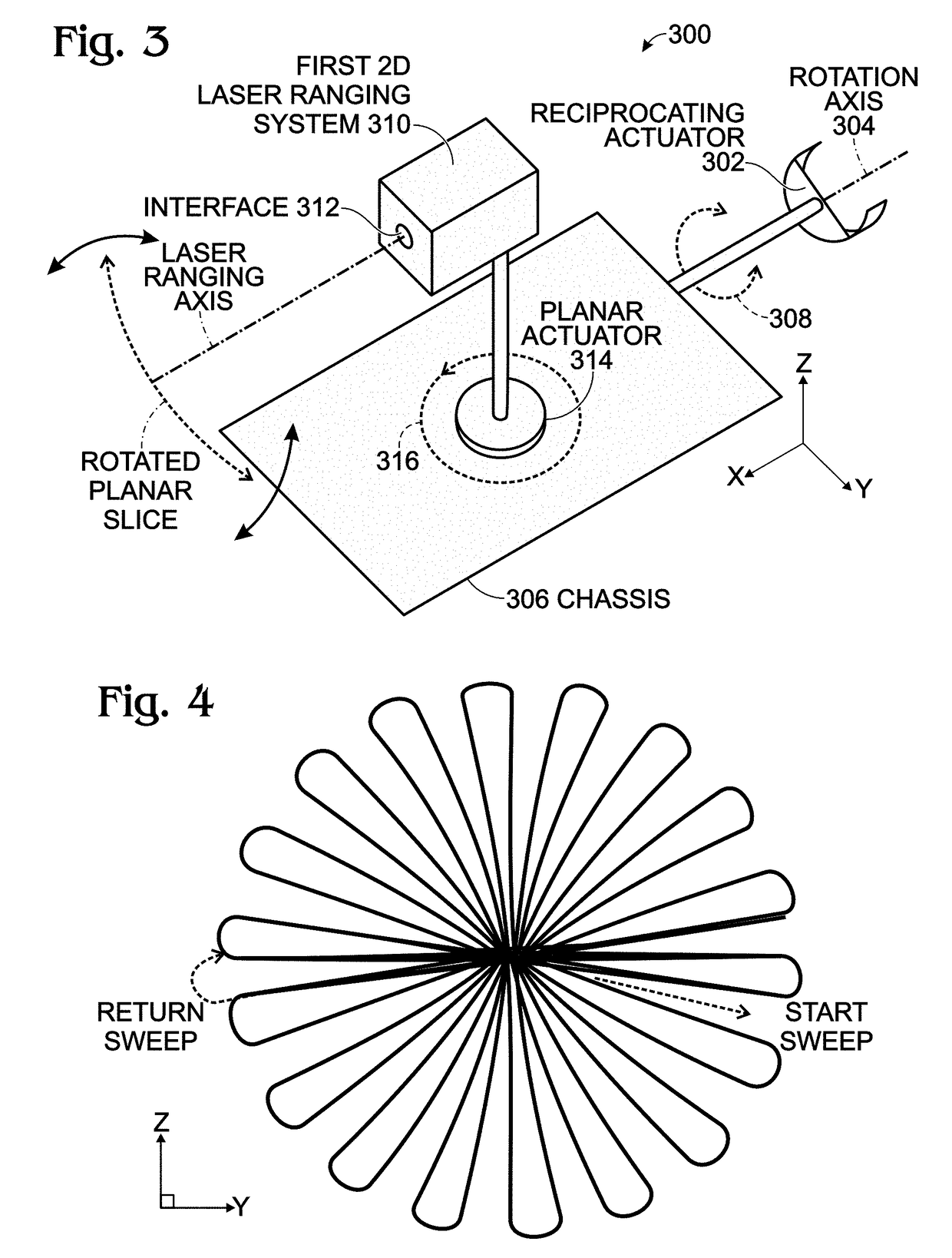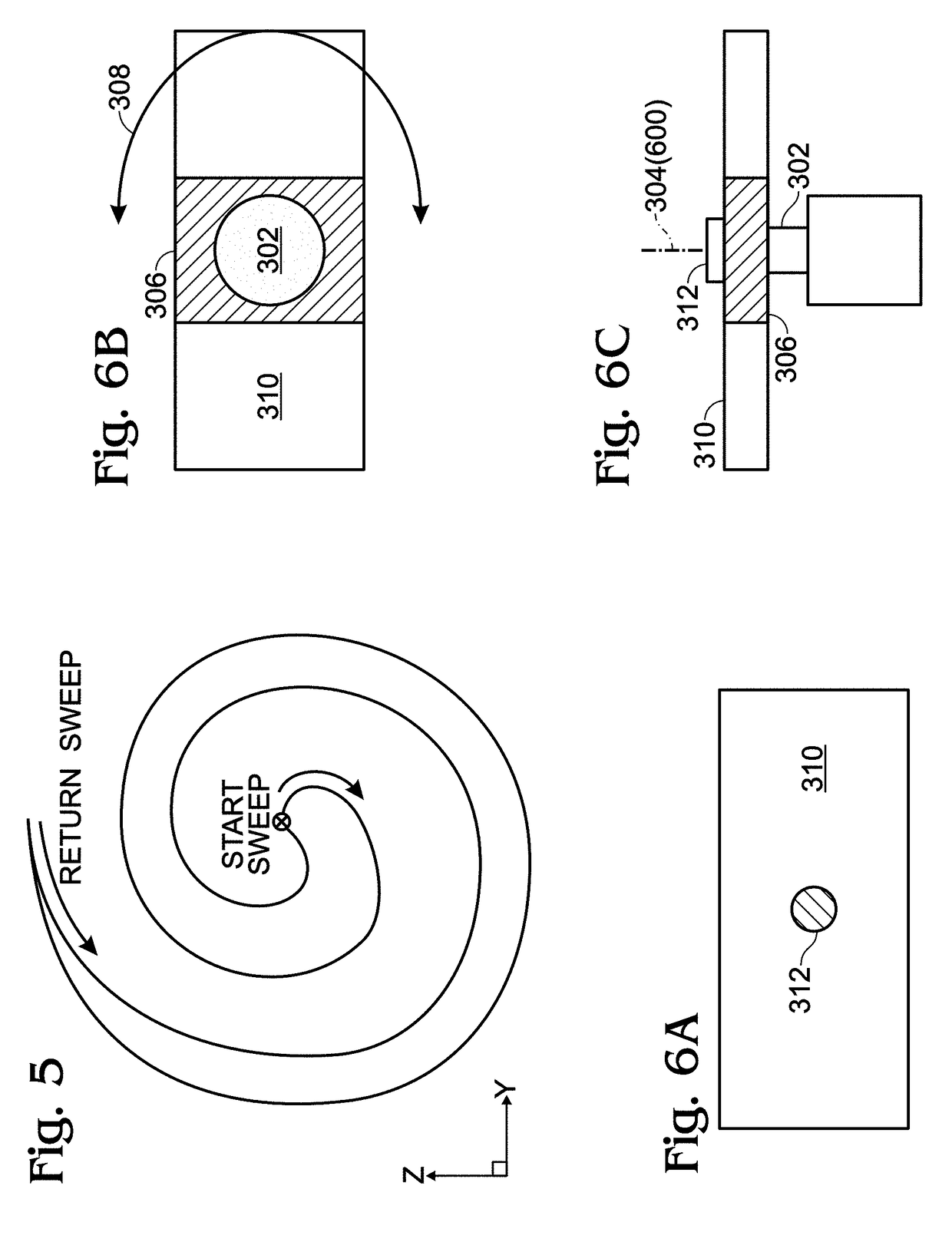System and Method for Three-Dimensional Mapping using Two-dimensional LiDAR Laser Ranging
a lidar laser and three-dimensional mapping technology, applied in the field of three-dimensional mapping using two-dimensional lidar laser ranging, can solve the problems of not being able to cover a narrow horizontal sliver of the environment, not being able to achieve the effect of eliminating deficiencies
- Summary
- Abstract
- Description
- Claims
- Application Information
AI Technical Summary
Benefits of technology
Problems solved by technology
Method used
Image
Examples
Embodiment Construction
[0026]FIG. 3 is a schematic block diagram of a three-dimensional (3D) LiDAR system using a two-dimensional (2D) LiDAR. The system 300 comprises a reciprocating actuator 302 having a rotation axis 304. A chassis 306 is attached to the reciprocating actuator 302, and is capable of reciprocal rotation about the rotation axis 304. As used herein, a reciprocating actuator is any mechanical means able to create a reciprocating or oscillating mechanical rotational motion. The reciprocating action is represented by the are 308. A first 2D laser ranging system 310 has an (optical) interface 312 for laser ranging a planar slice of an environment, and is mounted in the chassis 306. The simultaneous laser ranging of the planar slice and chassis rotation create a 3D laser mapping of at least a portion of the environment. More explicitly, the first 2D laser ranging system includes a planar actuator 314 for laser ranging a first planar slice, and the reciprocating actuator 302 rotates the chassis ...
PUM
 Login to View More
Login to View More Abstract
Description
Claims
Application Information
 Login to View More
Login to View More - R&D
- Intellectual Property
- Life Sciences
- Materials
- Tech Scout
- Unparalleled Data Quality
- Higher Quality Content
- 60% Fewer Hallucinations
Browse by: Latest US Patents, China's latest patents, Technical Efficacy Thesaurus, Application Domain, Technology Topic, Popular Technical Reports.
© 2025 PatSnap. All rights reserved.Legal|Privacy policy|Modern Slavery Act Transparency Statement|Sitemap|About US| Contact US: help@patsnap.com



